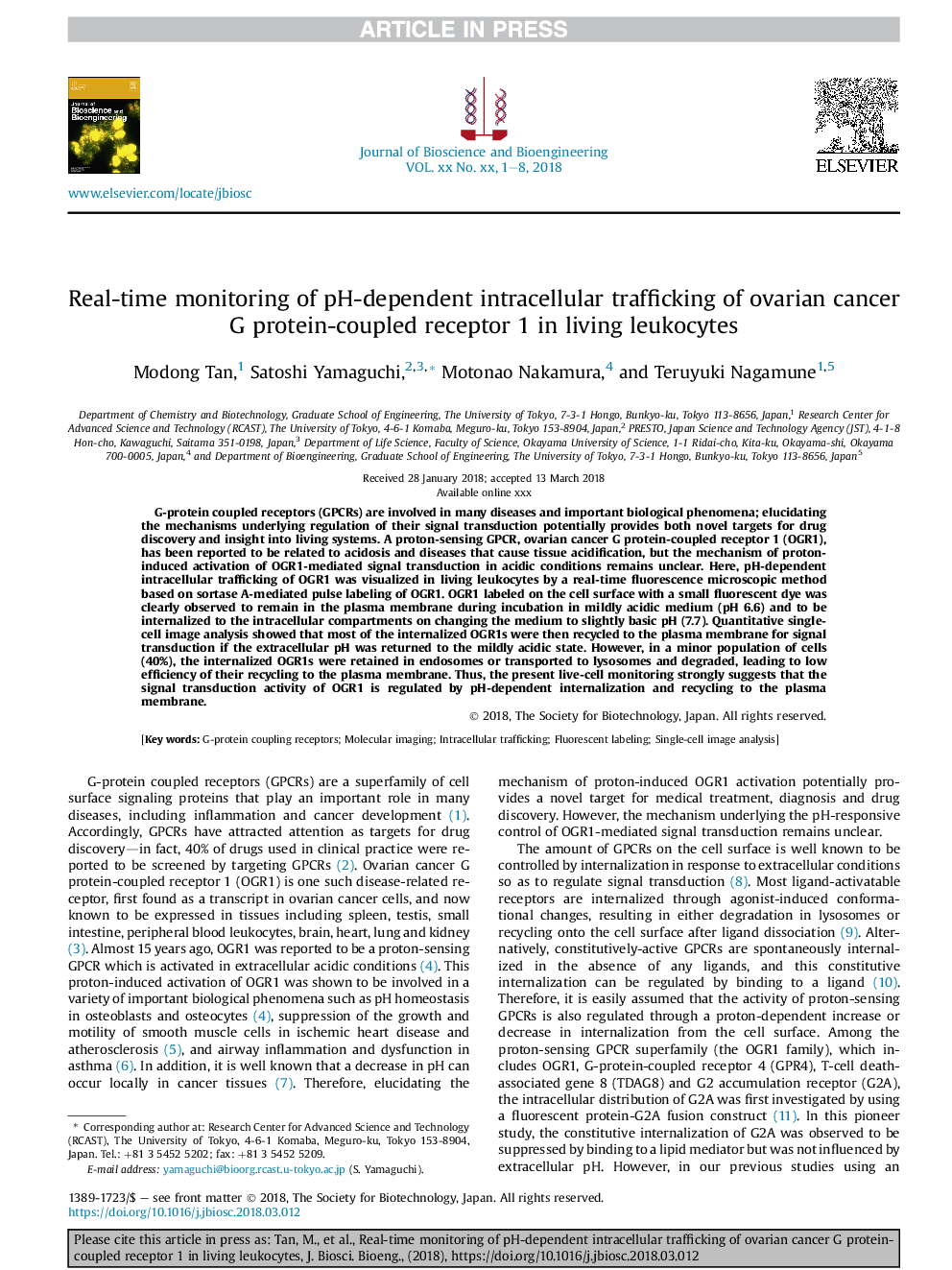| Article ID | Journal | Published Year | Pages | File Type |
|---|---|---|---|---|
| 6489584 | Journal of Bioscience and Bioengineering | 2018 | 8 Pages |
Abstract
G-protein coupled receptors (GPCRs) are involved in many diseases and important biological phenomena; elucidating the mechanisms underlying regulation of their signal transduction potentially provides both novel targets for drug discovery and insight into living systems. A proton-sensing GPCR, ovarian cancer G protein-coupled receptor 1 (OGR1), has been reported to be related to acidosis and diseases that cause tissue acidification, but the mechanism of proton-induced activation of OGR1-mediated signal transduction in acidic conditions remains unclear. Here, pH-dependent intracellular trafficking of OGR1 was visualized in living leukocytes by a real-time fluorescence microscopic method based on sortase A-mediated pulse labeling of OGR1. OGR1 labeled on the cell surface with a small fluorescent dye was clearly observed to remain in the plasma membrane during incubation in mildly acidic medium (pH 6.6) and to be internalized to the intracellular compartments on changing the medium to slightly basic pH (7.7). Quantitative single-cell image analysis showed that most of the internalized OGR1s were then recycled to the plasma membrane for signal transduction if the extracellular pH was returned to the mildly acidic state. However, in a minor population of cells (40%), the internalized OGR1s were retained in endosomes or transported to lysosomes and degraded, leading to low efficiency of their recycling to the plasma membrane. Thus, the present live-cell monitoring strongly suggests that the signal transduction activity of OGR1 is regulated by pH-dependent internalization and recycling to the plasma membrane.
Related Topics
Physical Sciences and Engineering
Chemical Engineering
Bioengineering
Authors
Modong Tan, Satoshi Yamaguchi, Motonao Nakamura, Teruyuki Nagamune,
